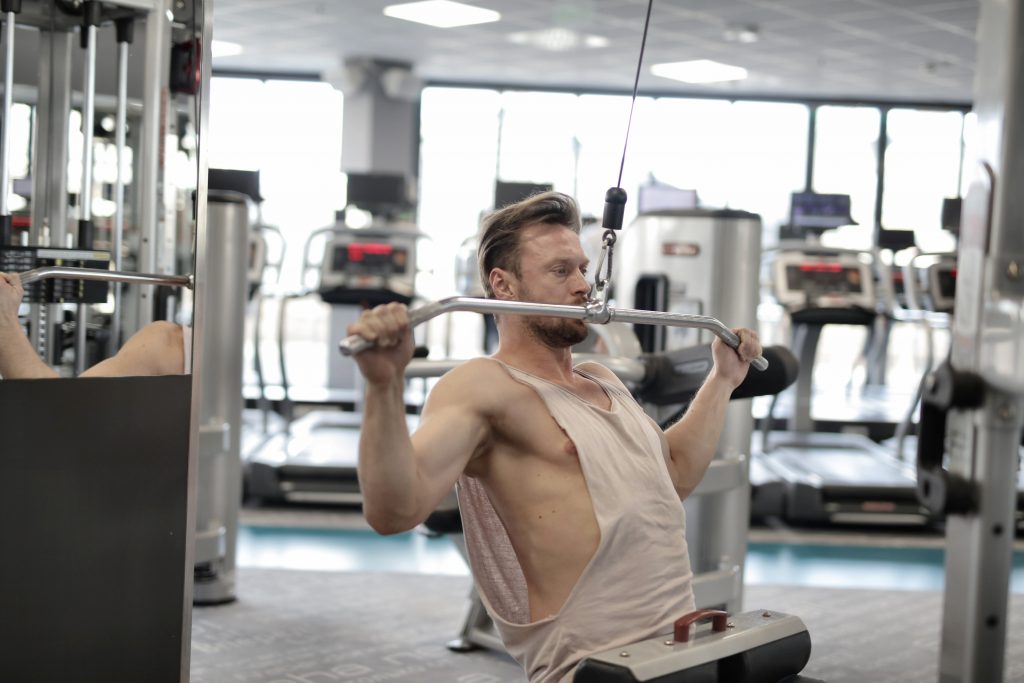Why bother exercising? “I’m too busy, I’m not fat, I’ve tried it but my back aches and my feet hurt.” “I would like to exercise my right not to exercise”. We have all heard these statements before, but maybe we can provide some exercise facts that will help motivate you or get you back on track. In this article we will give you some facts on the types of exercises, how much is too much, and the benefits of exercise. The human body is meant to move to maintain its health – without motion and exercise, it gradually deteriorates. The good news is that it’s never too late to see the benefits of exercise.
There are three main types of exercise:
- muscle strengthening exercises
- aerobic or cardiovascular exercises
- flexibility or stretching exercises
All three are important, but each type of exercise has its own benefits.
1) Muscle Strengthening Exercises
These improve the ability of muscles to move your body against gravity and support your joints. To strengthen muscles, you have to train and challenge them against resistance. Examples include:
- exercises using dumb-bell weights and bar-bells
- universal gym equipment
- raising and lowering your body, such as pushups or gym ball exercises

The main benefits of muscle strengthening exercises are:
- less stress on your joints, as the muscles can support more weight and relieve stress and weight on your trunk and leg joints
- speeds healing of injured joints, tendons, muscles, and ligaments by improving circulation, nutrition, and lubrication
- helps to treat and prevent conditions like arthritis, tendinitis, and back pain
- prevents and treats osteoporosis (bone weakening)
Strengthening exercises need to be outlined and personalized for you. A physiotherapist is licensed and qualified in this area, especially if you have an injury or condition.
2) Aerobic or Cardiovascular exercise
Aerobic exercise improves the ability of your body to perform activity for longer periods of time. Examples of aerobic exercise are brisk walks, swimming or water exercises, biking, or even chopping wood. In order to get the benefits of aerobic exercise, you have to exercise in your target heart range.

Your target heart range is easily calculated by the following:
220 minus your age which gives you your maximum heart rate. Then take 70% of that number. An example for a 35-year-old would be:
220 minus 35 = 185
70% of 185 = 130
Therefore 130 beats per minute is the minimum target heart range for a 35-year-old. You can train within 60% to 90% of your maximum heart rate. Thus a 35 year old would not want to exercise beyond 167 beats per minute (90% of their maximum heart rate).
How do you know if you are in your target heart range? You have to take your pulse. Take your pulse (easiest on your neck) while you are exercising for a 6-second time frame. Then just add a zero. So, if you had 13 beats in 6 seconds, your beats per minute would be 130. You have to exercise in your target heart range for a minimum of 30 minutes, three days a week, in order to see all the benefits. Even chopping wood can be an aerobic exercise if you maintain your target heart rate for 30 minutes.
The benefits of aerobic exercise include:
- prevention of heart and blood vessel disease
- weight loss (reducing body fat)
- improved stamina and endurance
- prevention of many diseases, such as cancer, diabetes, stroke, and heart attacks
3) Flexibility and Stretching Exercises
Flexibility exercises increase the freedom of movement of joints, muscles, ligaments, and tendons. These are usually performed in repetitions of 5 to 10, and each stretch is ideally held 5 to 20 seconds. You should have a few stretches for each area of the body.
The benefits include:
- speeds the healing of injured joints, muscles, tendons, and ligaments by increasing circulation, nutrition, and lubrication
- helps to prevent and treat stiff joints, tight muscles, arthritis, back and neck pain, and sports injuries
- allows you to participate in the activities you love

How much is too much?
Here are a few guidelines for all exercises
Pain should be your guide. Pain is your body’s way of saying there is a problem. It is okay to feel the burn and tired feeling of muscles working. There should not be any sharp pains or stabbing pains. If you are having discomfort in your joints or your back, it should not be more than mild. Mild pain is defined as a one or two out of ten on the pain scale. Ten is the worst pain you can imagine. It should not persist more than one to two hours after exercising.
Do not continue if pain spreads from your neck into your arm or from your low back into your leg. That can be a sign of a pinched nerve. Beware of pain that spreads out from one area to another.
Do not continue exercising if you become short of breath, lightheaded or dizzy.
Therefore it is a combination of all three types of exercise described above that is ideal for a general program. A program needs to be set up and personalized for you, given your expectations and goals, and any injuries or medical conditions you might have. Physiotherapists are licensed professionals that are very knowledgeable in these areas. All exercise programs should be started only after consulting with your doctor and physiotherapist. Remember that a lot of people give up exercising because they have programs that are not right for them. Do not let it become an exercise in frustration. Exercising can and should be enjoyable!
What about “zapping” the fat away with those electrical muscle stimulators ?
Click Here to learn more about electric muscle stimulators.
By Kelly Milan, BMR, PT ©




